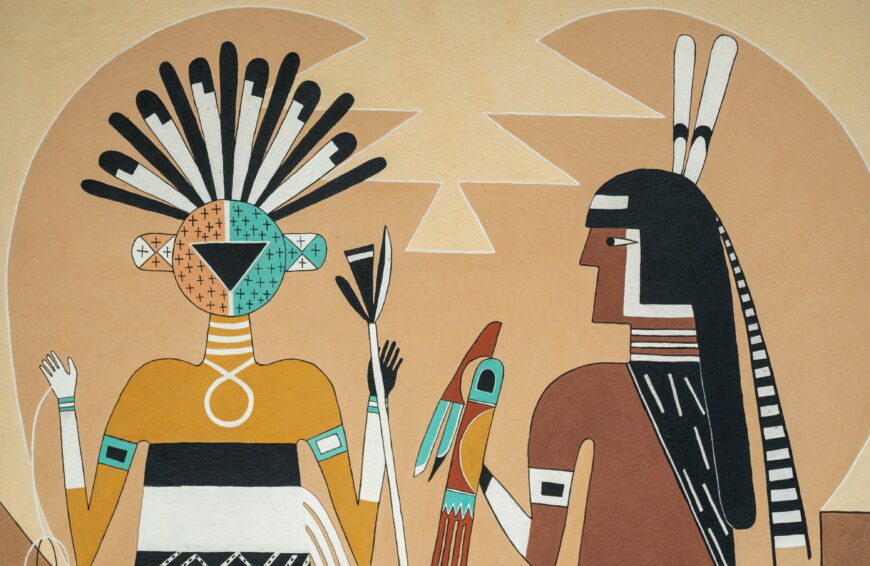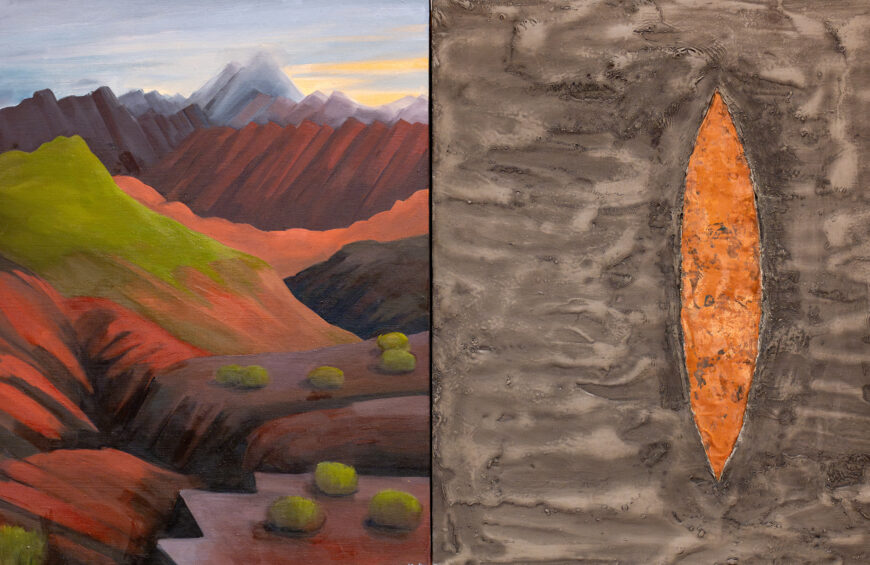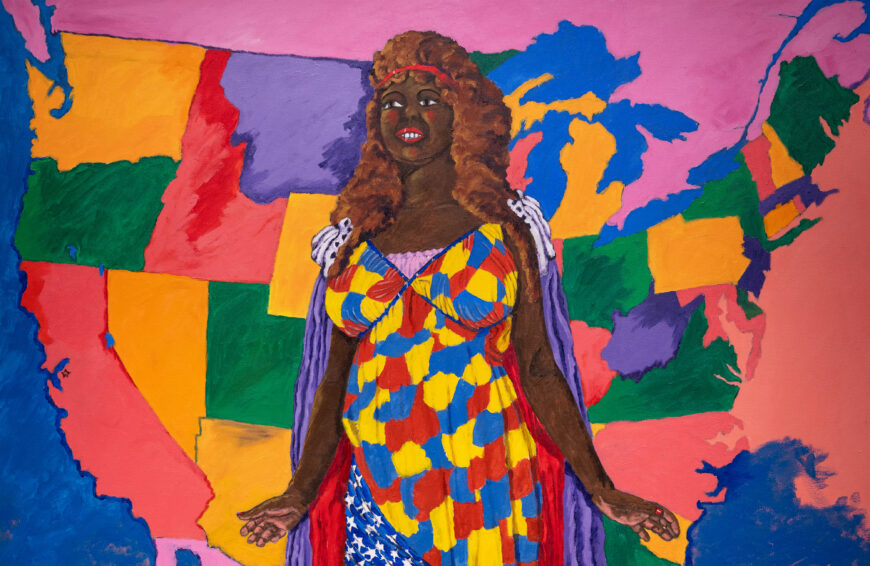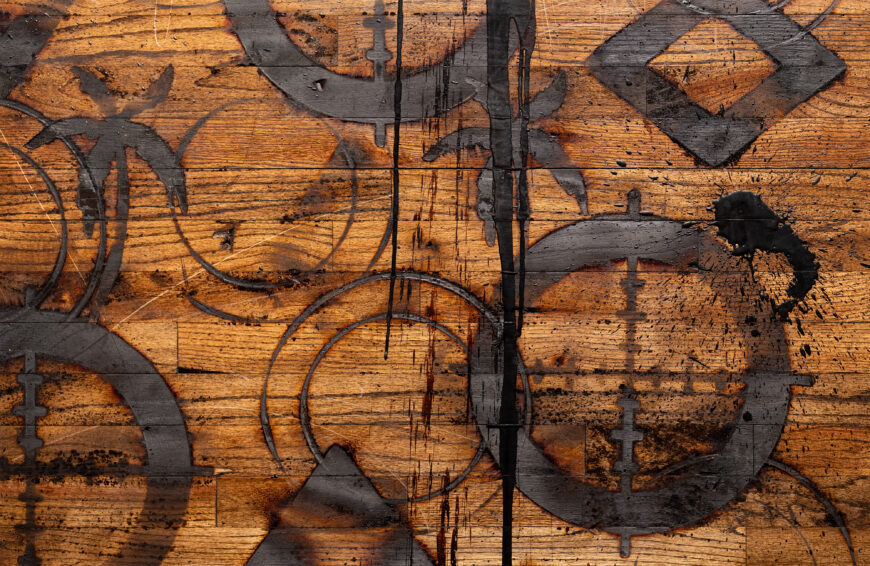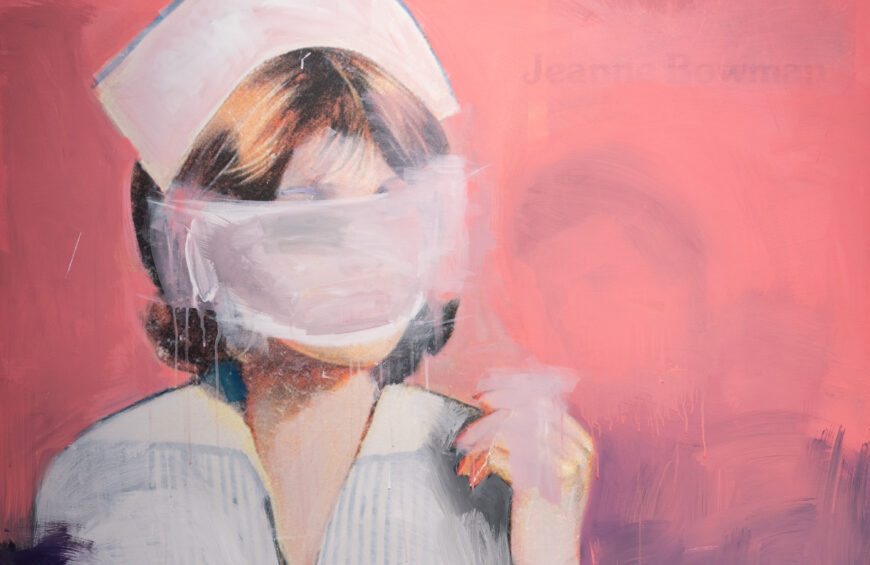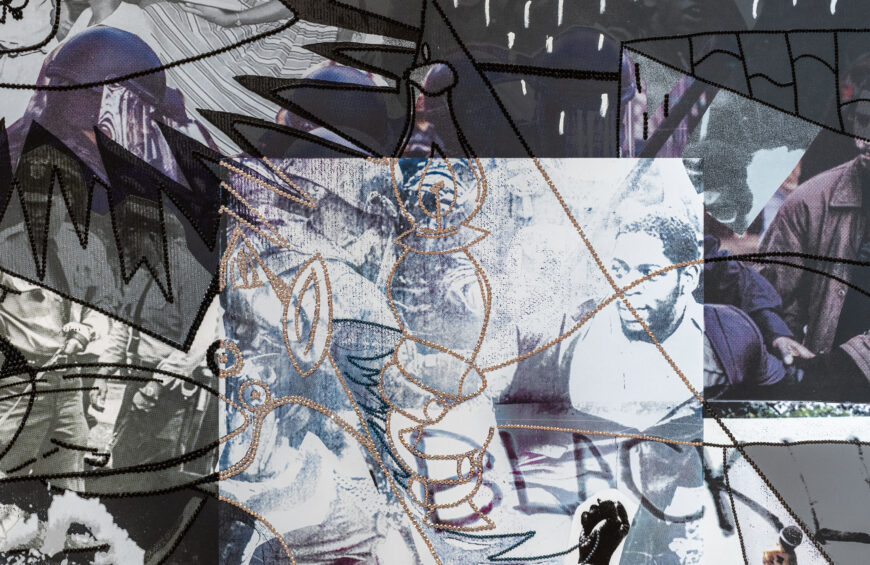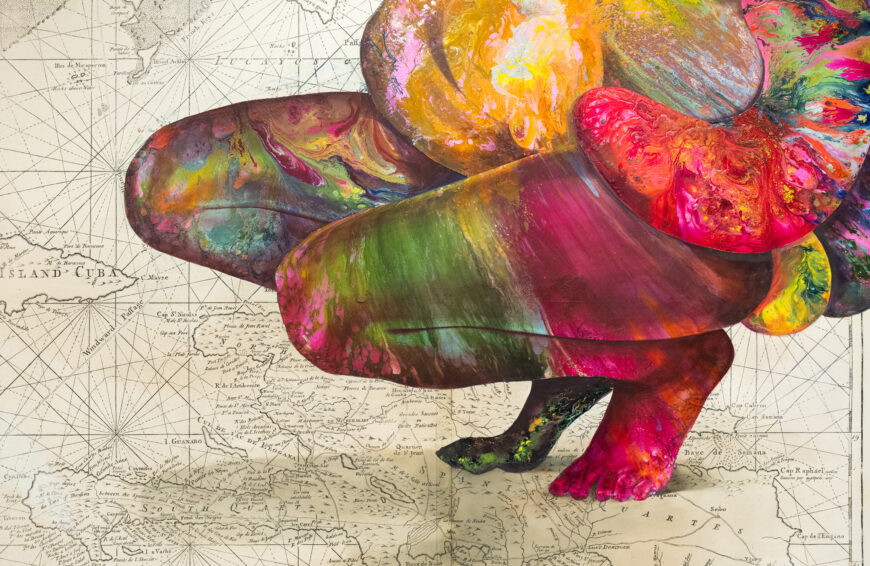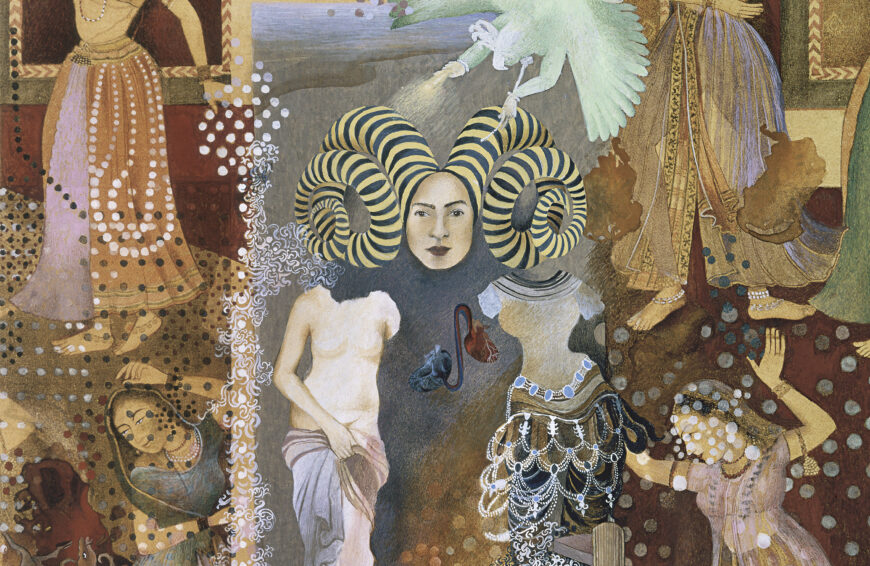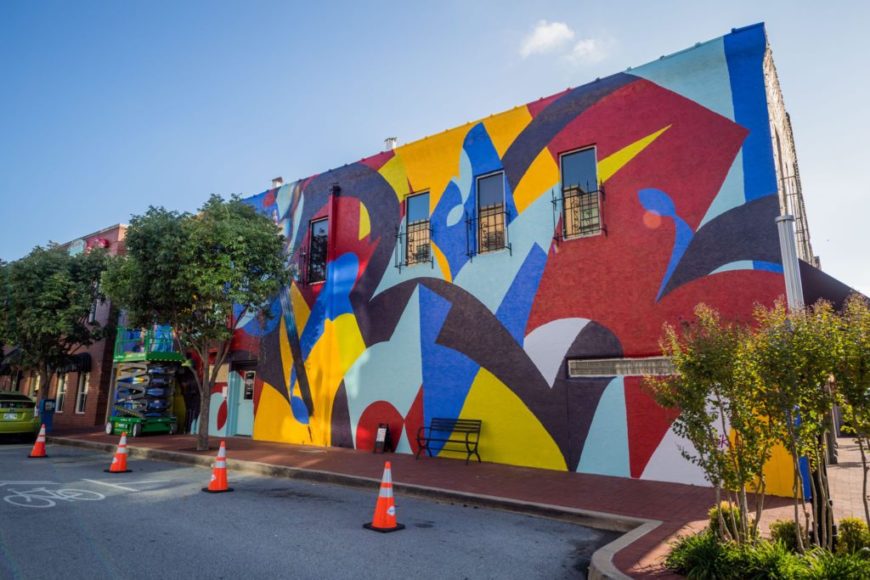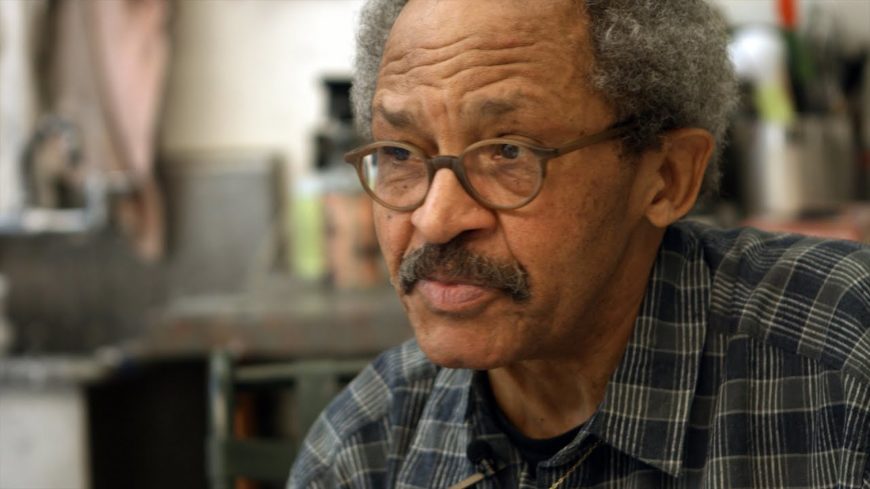Can the commonplace working farmland of California’s Sacramento River Valley be a place of of breathtaking beauty?
Wayne Thiebaud, Ponds and Streams, 2001, acrylic on canvas, 182.9 x 152.4 cm (Fine Arts Museums of San Francisco, ©Wayne Thiebaud), a Seeing America video
[0:00] [music]
Dr. Steven Zucker: [0:06] We’re in the Photo Studio in the de Young Museum, part of the Fine Arts Museums of San Francisco, looking at a large painting. It’s a landscape, but it’s a modern landscape.
Dr. Lauren Palmor: [0:15] This is “Ponds and Streams” by Wayne Thiebaud. We’re looking across the Sacramento River Valley in California, almost from the perspective of a bird, but multiple perspectives are included in a way that makes it feel like we’re actively flying over this scene.
Dr. Zucker: [0:32] The Central Valley is the most productive agricultural area in the United States. It is where our fruits and vegetables come from. But it’s not naturally productive farmland, this is an arid environment that has been artificially watered.
Dr. Palmor: [0:45] This is an area that Thiebaud knows well. He’s intimately associated with this part of California. He’s Sacramento’s hometown painter and a local hero throughout northern California.
Dr. Zucker: [0:57] We’re looking at a canvas that is about beauty, but it’s also depicting a fraught place.
Dr. Palmor: [1:02] The very center of the canvas is dominated by a large retention pond. A retention pond is not naturally occurring. It was created with agricultural processes in mind. All around this is a busy flurry of agricultural activity, tractors whirring, cars passing, but right in the middle is this beautiful stillness.
Dr. Zucker: [1:24] The pond does seem to be framed by this crazy quilt of patterns. Where I would expect to see browns, I’m seeing purples. I’m seeing reds, and grays, and brilliant electric greens. There are these hot reds and brilliant oranges. The colors distance the landscape from nature. They make the landscape seem as if it’s man-made.
Dr. Palmor: [1:47] All throughout the scene, the artist suggests the impact that people have had on the natural landscape.
Dr. Zucker: [1:54] We get a sense of that conflict between man and nature, man’s intervention into the natural world.
Dr. Palmor: [2:00] It’s easy to forget that those who grow our food sometimes need to depend on using chemicals to do so. Looking at these colors in the context of all that water, you might make an association between the water we drink, the food that we eat, and the toxic chemicals that are sometimes used by farmers in order to grow that food.
Dr. Zucker: [2:20] The color is oddly menacing. It seems artificial. It seems almost poisonous. Look, for example, at the edging of the green in a turquoise field at the lower left, or the orange that’s close to the very high horizon line.
Dr. Palmor: [2:34] He knows these farms, and he chooses to paint them even in this palette of toxic lushness.
Dr. Zucker: [2:40] The perspective is so complicated. It seems as if we’re clearly above the brown serpentine furrows at the very bottom of the painting. But then it seems as if our perspective is now low and close to the earth as we look at the left side of the canvas and we see the orthogonals of the fields race back into space.
[2:58] In one of the only parts of this painting that feel truly organic, that is, the trees and foliage that surround the retaining pond, look at the relationship between the colors of the stand of trees just at the bottom of the pond, where the branches are every color of the rainbow, and the way they seem to almost grow seamlessly out of the shadow that they cast, which is this beautiful royal blue.
Dr. Palmor: [3:20] You can look over to the lone tree growing in a field, and you see a completely different shadow. Again, our sense of perspective is really toyed with by the artist.
Dr. Zucker: [3:29] The pond itself — this water that has come from the Sierra Nevadas, that has been brought artificially through this landscape and has made this landscape fertile — seems distorted, as if we’re seeing it from multiple perspectives over time. As if we’re both looking across and at times down at the pond.
Dr. Palmor: [3:47] We know that there have been multiple incidents of terrible water pollution in the Sacramento River Valley, an area inhabited by about two million people. It’s hard if you read the newspaper in California to look at a painting like this and not think about those stories.
Dr. Zucker: [4:05] For all the artificiality of the colors, they create a really beautiful image. He is constructing beauty here. It reminds me of a long history in American painting of the landscape and this complicated relationship between a love for the untouched wilderness against the observations of beauty that can be found in a built environment.
[4:26] A painting like “Lackawanna Valley,” which is thinking simultaneously about the nostalgia of the untouched wilderness versus the landscape that we transform.
[4:35] [music]


